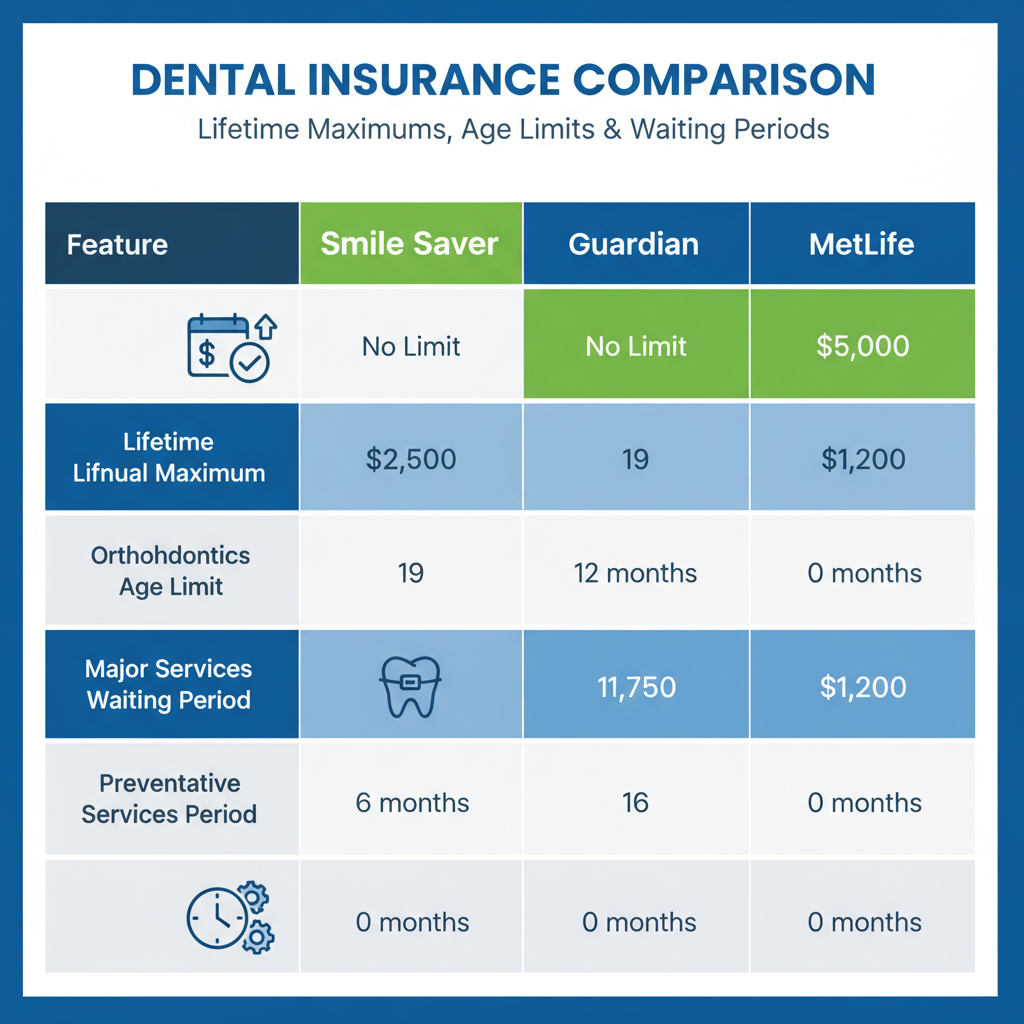
Imagine finally booking your child’s orthodontic consultation—only to learn your dental insurance won’t cover nearly as much as you thought. Maybe you enrolled in a plan last month, but there’s a sneaky waiting period. Or your child is about to turn 19, and suddenly, the orthodontic coverage vanishes. Sound familiar? Then you need to know the fine print that could save—or cost—you thousands on your kid’s braces.
Why Parents Get Blindsided by Braces Costs
Dental insurance for kids with orthodontic coverage is packed with small print. Lifetime maximums, age limits, and waiting periods are the three main traps that can dramatically inflate your out-of-pocket costs. It’s not just the monthly premium—timing, plan shopping, and understanding these terms decide whether you’ll pay $900 or $9,000 for your child’s smile.

Trap #1: Lifetime Maximums—The Invisible Ceiling
Almost every kids’ dental plan with orthodontic coverage sets a lifetime maximum: the total amount the insurer will ever pay toward braces, Invisalign, or other orthodontic treatments for your child. The current crop of popular plans offers:

- GEHA High Dental Plan 2025: $3,500 lifetime maximum for orthodontics, 30% coinsurance, no waiting period (all ages) [1]
- United Concordia FEDVIP: $1,500 orthodontic lifetime maximum for kids up to age 19 [7]
- Aflac Dental Insurance: Lifetime maximums vary by plan; orthodontic benefits kick in only after the waiting period [3]
Here’s the kicker: average costs for braces run $5,350–$12,000 today, depending on your location and treatment method [2][3]. That means most insurance will cover only a fraction, leaving you responsible for the rest. Plans rarely pay more than their maximum, no matter how long you stay enrolled.
How to Beat the Lifetime Max
- Ask your insurer for a “lifetime maximum” breakdown before enrolling or scheduling treatment.
- Consider supplementing with a secondary dental plan (e.g., Aflac’s supplemental option [3]) if your main plan’s lifetime max is low.
- For families with multiple children, lifetime maximums apply per child—never assume coverage is unlimited!
Trap #2: Age Limits—When Coverage Disappears
Many dental insurance plans for kids cap orthodontic coverage at age 18 or 19. Miss that window—by waiting too long or starting late—and your insurer may deny claims for braces or Invisalign, even if treatment is medically necessary.
- United Concordia FEDVIP: Orthodontics covered for children up to age 19 [7]
- Anthem: Pediatric plans typically end orthodontic coverage at 18; individual plans may offer coverage for older dependents [2]
- GEHA High Plan: Covers both children and adults, no age cap [1] (rare!)
Real-World Example: If you enroll your 17-year-old in a plan with an 18-year age limit and a 12-month waiting period, you may lose coverage before treatment starts. That’s a multi-thousand-dollar mistake.

What Parents Can Do Today
- Check the fine print for “dependent age limit” on orthodontic benefits.
- Start consultations and paperwork as early as possible—ideally before your child’s 16th birthday.
- If your child is older, look for rare plans like GEHA High that cover adult orthodontics [1].
Trap #3: Waiting Periods—The Delayed Start That Costs You
Most dental insurance plans require a waiting period (commonly 6–12 months) before orthodontic coverage kicks in. If you enroll now but begin treatment next month, you’ll pay full price for those braces—insurance won’t help until the period ends.

- GEHA High Option: No waiting period for orthodontics [1]
- Aflac Dental: Waiting period required before orthodontic benefits apply [3]
Time-sensitive tip: If your family moves to a new plan or switches jobs, ask about “credit for prior coverage.” Some insurers will waive waiting periods if you’ve had continuous dental insurance with orthodontic benefits.
How Waiting Periods Affect What You Pay
- Delaying treatment until waiting periods end can save thousands; plan ahead if possible.
- Orthodontic work started with a previous insurer is rarely covered by your new plan—double-check before switching [1].
- For urgent cases (e.g., jaw issues, severe misalignment), some plans may waive the waiting period if treatment is “medically necessary.” Always ask!
2025’s Top Kids’ Dental Plans with Orthodontic Coverage—Prices & Fine Print
| Plan | Lifetime Max | Age Limit | Waiting Period | Notes |
|---|---|---|---|---|
| GEHA High Dental Plan 2025 | $3,500 | None | None | 30% coinsurance; covers adults & kids |
| United Concordia FEDVIP | $1,500 | 19 | Typically 12 months | Annual max $1,000/child |
| Aflac Dental Insurance | Varies | Usually 19 | 6–12 months | Supplemental options for extra coverage |
Current premiums: GEHA High starts around $35/month per child; United Concordia’s FEDVIP is about $28–$42/month depending on state and coverage level; Aflac supplemental plans vary (roughly $11–$38/month) [1][3][7].

Expert Tips: How to Avoid Costly Surprises
- Time your plan and treatment: Enroll at least a year before you expect to start braces, especially if your child is nearing age limits.
- Calculate your true out-of-pocket: Add up average costs ($5,350–$12,000 for braces [2][3]), subtract your insurer’s maximum, coinsurance, and any waiting period delays.
- Ask tough questions: Before committing, request a written breakdown of all coverage terms, including lifetime max, age cap, and waiting period.
- Don’t rely on open enrollment alone: Medicaid/CHIP plans (like MCNA or DentaQuest in Florida) offer robust coverage for eligible families, but have strict age and procedure rules [6][10].
Act Now: Beat the Fine Print and Save Thousands
FOMO alert: If you’re considering braces or Invisalign for your child, the difference between enrolling today and waiting six months could mean thousands in lost coverage. Don’t wait until your child ages out or hits a waiting period ceiling. Shop plans, compare lifetime maximums, and schedule orthodontic consultations ASAP.
Ready to take control? Contact your insurer for an exact orthodontic coverage sheet. Ask your orthodontist for a treatment timeline and coordinate with your coverage deadlines. For bigger families, calculate the total cost for all kids and seek supplemental options if the math doesn’t add up.

Don’t let the fine print wreck your braces budget—act now and protect your child’s smile for life.


